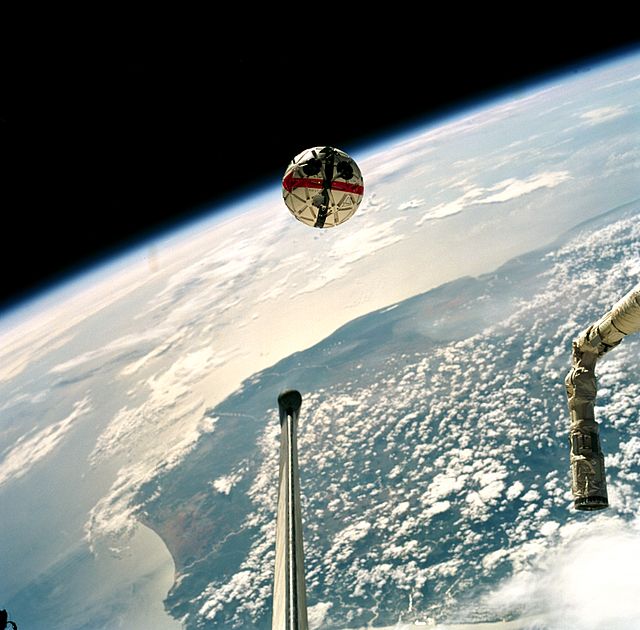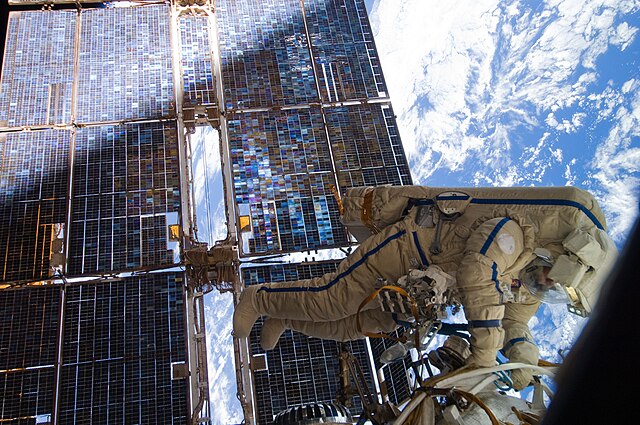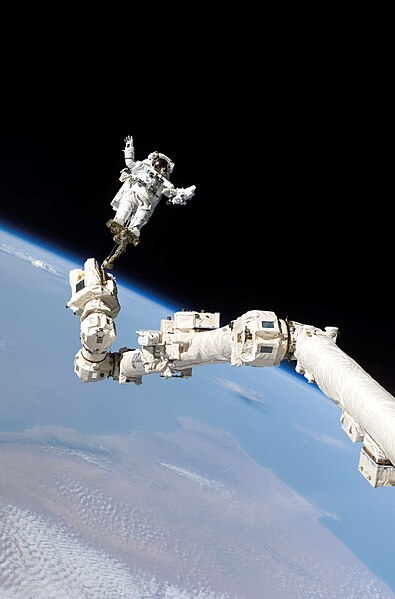STS-87 was a Space Shuttle mission launched from Launch Complex 39B of the Kennedy Space Center on 19 November 1997. It was the 88th flight of the Space Shuttle and the 24th flight of Columbia. The mission goals were to conduct experiments using the United States Microgravity Payload (USMP-4), conduct two EVAs, and deploy the SPARTAN-201 experiment. This mission marked the first time an EVA was performed from Columbia. EVAs from Columbia were originally planned for STS-5 in 1982 and STS-80 in 1996, but were canceled due to spacesuit and airlock problems, respectively. It also marked the first EVA conducted by a Japanese astronaut, Takao Doi.
AERCam Sprint, one of the USMP-4 payloads, in flight above Columbia's payload bay
Left to right - in orange: Chawla, Lindsey, Kregel, Kadenyuk; in white: Scott, DoiSpace Shuttle program← STS-86 (87)STS-89 (89) →
Launch of STS-87
STS-87 in-flight crew portrait
Extravehicular activity (EVA) is any activity done by an astronaut in outer space outside a spacecraft. In the absence of a breathable Earthlike atmosphere, the astronaut is completely reliant on a space suit for environmental support. EVA includes spacewalks and lunar or planetary surface exploration. In a stand-up EVA (SEVA), an astronaut stands through an open hatch but does not fully leave the spacecraft. EVAs have been conducted by the Soviet Union/Russia, the United States, Canada, the European Space Agency and China.
Cosmonaut Sergey Volkov works outside the International Space Station on August 3, 2011.
Stephen Robinson riding the Canadarm2 during STS-114 on August 3, 2005. The first in-flight repair of the Space Shuttle. The landmass in the backdrop is the Bari region of Somalia.
Ed White performs the first American spacewalk during Gemini IV.
Buzz Aldrin walks on the Moon during the pioneering Apollo 11 mission in 1969.








